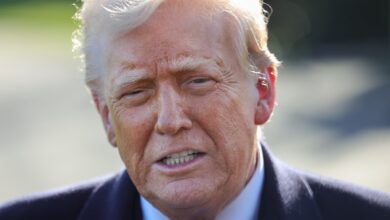
China’s excellent grand strategy has propelled its meteoric rise to great power status. A focus on fostering economic growth and consolidating political power during the “hide and bide” years of Deng Xiaoping and his successors proved extremely successful.
Now, Chinese President Xi Jinping is crafting his own grand strategic legacy through his “China Dream.” If Xi can accomplish even half the policy goals that make up his vision for China’s future, the implications for the US will be severe.
China’s grand strategy is cementing the nation’s status as a great power, and the US’ lack of one is leaving it rudderless. To confront this challenge, the US will need a grand strategy of its own.
Xi’s China Dream
Xi’s China Dream is a prosperous China, economically and militarily powerful, and reunified with Taiwan by 2049. This “dream” is actually a roadmap. It is a set of long-term goals backed by concrete initiatives aimed at firmly establishing China as a global power in the 21st century.
The China Dream rests on three main pillars.
The first pillar is the Belt and Road Initiative (BRI), a massive program that provides critical infrastructure loans and grants across the globe. The BRI’s stated goal is to enhance China’s economic connectivity with the rest of the world.
However, the initiative has also enabled China to deepen economic and diplomatic ties with countries in geo-strategically important regions and extend its military’s reach through the development of “dual-use” facilities.

The second pillar of the China Dream is the modernization and professionalization of the People’s Liberation Army (PLA). Xi has stated that to realize the China Dream, the PLA must become a “world-class” fighting force by 2049.
The PLA is well on its way to achieving that goal. Each of the PLA service arms has accelerated the phasing out of older obsolete systems and platforms and begun fielding state of the art technologies on par with (or in some cases better than) those fielded by the US military.
The PLA has also enhanced its command and control capabilities and become more professional through better schooling, training, and staffing practices.
The final pillar of China’s grand strategy is the Made in China 2025 initiative. It aims to make China a dominant developer and manufacturer of advanced technologies. Given technology’s importance in the economic and defense domains, Chinese prowess in this area would greatly expand the nation’s power and influence.
While Made in China 2025 has not yet been as successful as the other two pillars, its potential impact is immense.
Contending With China’s Grand Strategy
To contend with China’s grand strategy, the US must formulate one of its own. This starts by centering China as the main threat within the American threat environment.
Current strategic documents, the National Security Strategy and the National Defense Strategy, largely fail to do this. Both documents dedicate significant space to “great-power competition” with China and Russia, but the latter is not of the same caliber as China.
Threats from Russia, Iran, North Korea, and violent extremist organizations are real, but effective grand strategy requires setting priorities. While China is not the only threat, it is the central one.
Once the US’s grand strategy focuses on China, state power instruments can address the threats it poses. Defense spending should focus on maintaining US qualitative advantages over the PLA, and closing gaps in areas where advantages have eroded.
Diplomatic energy should focus on strengthening ties with existing allies and partners in the Indo-Pacific, as well as building relationships with new potential partners like India.
In the economic domain, Washington should sign back into the Trans-Pacific Partnership. The trade agreement isn’t perfect, but joining it will show Indo-Pacific nations that Washington wants to be economically engaged.
Despite differences, the US and China still need to cooperate where possible to avoid conflict. Issues like combating climate change and global health (as the COVID-19 pandemic has all too clearly shown) are areas where Washington and Beijing simply must cooperate.
In a world of finite means, setting priorities is critical. America faces a challenge in China unlike any it has seen since the Soviet Union. It can no longer afford to muddle through.
The US needs a grand strategy of its own to protect its global interests and keep the American people safe and secure.
 John Flannelly is a recent graduate of George Washington University’s Elliott School of International Affairs, holding a Master of Arts in Security Policy Studies. His academic and professional work has focused primarily on Asia-Pacific and Middle East and North Africa security issues. John holds a Bachelor of Arts in Political Science from Gettysburg College.
John Flannelly is a recent graduate of George Washington University’s Elliott School of International Affairs, holding a Master of Arts in Security Policy Studies. His academic and professional work has focused primarily on Asia-Pacific and Middle East and North Africa security issues. John holds a Bachelor of Arts in Political Science from Gettysburg College.
Disclaimer: The views and opinions expressed here are those of the author and do not necessarily reflect the editorial position of The Defense Post.
The Defense Post aims to publish a wide range of high-quality opinion and analysis from a diverse array of people – do you want to send us yours? Click here to submit an op-ed.











